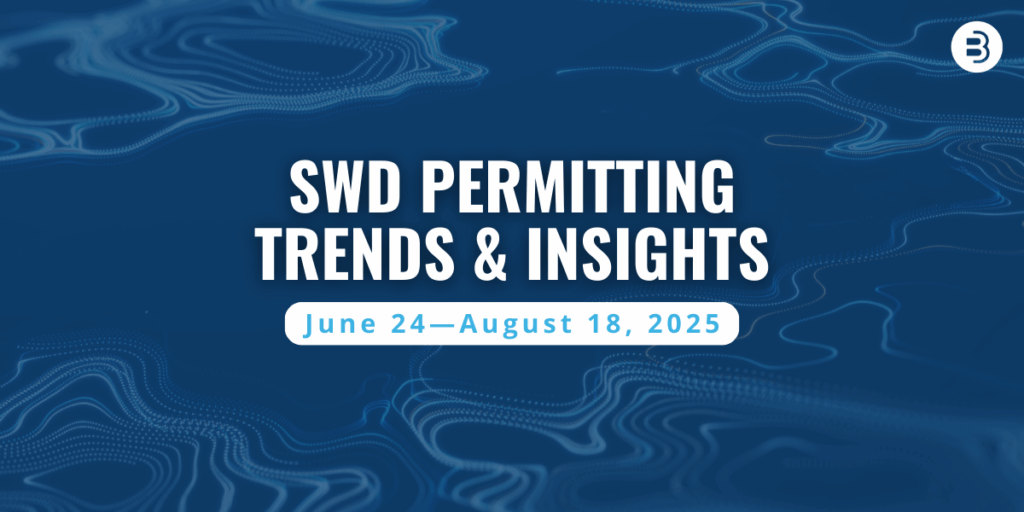Period: June 24 – August 18, 2025
Disposal dynamics in the Permian are moving quickly—shaped by the new Railroad Commission guidelines and deeper geotechnical constraints.
Delaware Basin: From Decline to Near-Stall
Permit activity was already sliding, with Delaware’s role as a disposal workhorse fading due to rising pressures, dwindling operational capacity, seismicity risks, and the RRC’s new June 1 standards. The slowdown has deepened. Only two approvals were granted across the Delaware in the period listed above, and new activity was limited almost entirely to amendments to existing wells. The basin is increasingly constrained by pore space exhaustion and pressure-based caps.
Central Basin Platform: Growth Accelerates
As noted previously, the CBP is increasingly a disposal focal point, with operators beginning to pivot east. This period, that pivot is more pronounced as it tied for the lead in approvals (17), confirming its role as a critical outlet for Delaware volumes.
Midland Basin: From Supporting Role to Backbone
Midland remains a solid secondary option to CBP, benefiting from lower pressures and existing infrastructure. Activity remains strong, with 16 approved permits. Long-haul transfers from Delaware are reinforcing Midland’s role as a backbone in the region’s disposal strategy.
The RRC’s new requirements—expanded AORs, fracture containment analysis, and engineering certification—are only part of the story. The bigger driver: dwindling pore space in the Delaware Basin. Operators are increasingly rerouting produced water east into the CBP and Midland, where reservoir pressures remain lower and disposal headroom exists.
Key Takeaways
What began as an early eastward pivot has now hardened into a structural shift. With Delaware nearly stalled, the CBP and Midland Basin are absorbing disposal demand. The result: higher costs, longer lead times, and greater strategic reliance on eastward pore space.
Stay ahead of shifting disposal dynamics.
B3 Insight’s UIC Permit Application Monitor keeps you current with basin-wide application activity, status changes, and regulatory trends, delivered every two weeks.

